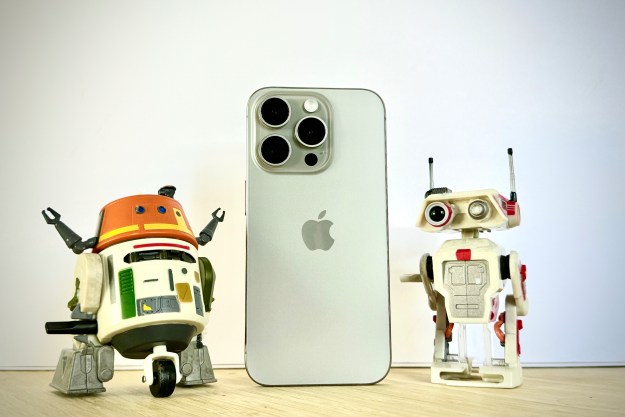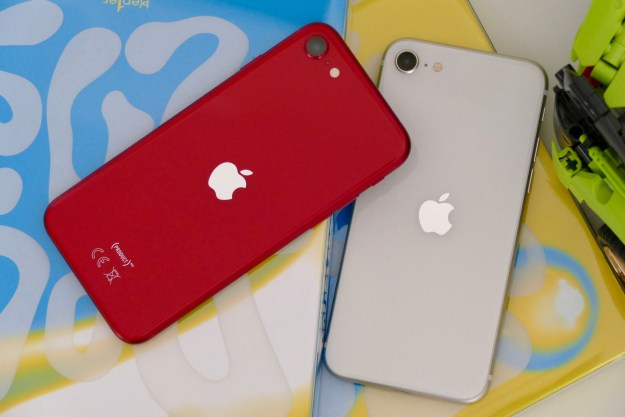Over the last decade, there are few companies Apple has been worried about. One is HP, which had the only product that had a chance of beating the early iPod, and the other was Palm, which had the best chance of beating the iPhone. HP was tricked into giving up its potential iPod killer, and Palm’s execution was a train wreck. Now the two companies have agreed to merge with a common goal, HP won’t be tricked again, and Palm has the resources of a massive multinational to play with. Life will get a lot more interesting for both Apple and HP as the combined resources come into play around this time next year. However, I do expect, we’ll see a near-term solution (likely Palm designed) by year end.
Let’s talk about the potential of this deal, remembering all the while that both firms have had huge opportunities in the past and failed to execute on them.
 HP’s Apple Scare
HP’s Apple Scare
I captured this story years ago from HP after the HP-branded iPod deal fell apart. Apparently, Steve Jobs, who ironically seems to have excessive access to competitor’s secrets, learned of a coming HP MP3 player and it was good enough that it scared him. He picked up the phone and called HP’s then CEO and offered her a deal that he has never personally offered to any other company since taking Apple over: The chance to sell an iPod clone branded by HP. She jumped at the deal after Apple promised her team they could link it in with their Media Center products and have special colors (the one they initially showcased was HP Blue).
After the deal was cut, Apple underpriced the HP products, didn’t allow HP to bring out colors (arguing that colors like those currently used in the iPod Nano line were inappropriate for an iPod) and blocked all efforts to fully integrate the iPod into HP’s media center. The provision that locked HP out of the MP3 player market, however, held firm. By the time HP was free to bring out their own product, Apple owned the market. It was a brilliant strategy on Apple’s part, but HP was mad, and Carly Fiorina was likely fired because of poor deals like this.
Palm’s Stumble
Palm introduced the Palm Pre at CES and stole the show, much as the iPhone had done several years earlier. Jon Rubinstein had standing ovations, and the iPhone user beside me at the launch event was quite literally falling out of his seat, he was so excited about the product. In many ways it was a better iPhone alternative than the Motorola Droid, but Palm didn’t position it that way. After a series of clearly open challenges to Apple, Palm launched the Pre with what was arguably the worst seeding and advertising program I had ever seen for a product, in addition to going exclusive with Sprint – a cellular service provider that was losing customers left and right.
 HP + Palm
HP + Palm
Todd Bradley, the executive in line to run HP (and who currently runs HP’s PC division), used to run Palm and knows that company well. He brought a number of ex-Palm and ex-Apple employees into HP. The result is that HP has consistently improved both the look and experiences associated with its products and the marketing that surrounds them, but remained ineffective with its phones.
Palm lacked the resources to make another run at Apple, even though it corrected most of the initial problems with the Palm Pre rollout.
Both companies have a deep desire to beat Apple, because Apple has consistently made fools of both firms. This creates a common goal that should keep the resulting combined company focused. And HP doesn’t require the massive gross margins that Apple needs to survive given the firm and potential pricing advantage as well. If HP can engage Apple in a price war the same way it did with Dell, Apple would be at a severe disadvantage. But first they need a truly competitive product.
WebOS and Palm’s Patent Portfolio are the Keys
With the Apple-HTC litigation, combined with the recent news that HTC had to license Microsoft’s mobile technology for its Android products it has became clear that to compete with Apple, Android isn’t a good choice. Microsoft’s delays with Windows Phone 7 and their unwillingness to license that product for an iPad-like tablet knocked them out as well, leaving only the WebOS and large Palm patent portfolio as the best path to create an iPhone or iPad line that could take the fight to Apple.
This is effectively a declaration that HP and Palm are going after Apple, and they are both pissed and focused.
It’s All about Execution Now, and Execution is Tough
The two companies have to be brought together, and solutions driven into the market quickly to take full advantage of the combined resources. HP messed up the Voodoo acquisition, suggesting there is some risk that this might not go well, and Apple isn’t going to let HP come at them unchallenged. It will likely pull out all the stops in defense. In effect, both HP and Palm will have to admit their past mistakes, learn from them, and execute sharply to get this done. That’s not trivial, but HP has tablet and smartphone display technology in-house that I spoke of previously, an eBook reader, and a set of media management tools that are potentially unmatched in the market out of their lab. Along with the Palm IP, these tools could give them an incredible advantage, if they can execute. That “if” has proven to be a formidable barrier for anyone, including HP and Palm, when it comes to competing with Apple. We’ll see if they make it this time.
Editors' Recommendations
- This one Apple Fitness feature completely changed how I exercise
- AirTags range: here’s how far the tracker can reach
- An Apple insider just revealed how iOS 18’s AI features will work
- 5 phones you should buy instead of the iPhone 15
- iPhone 16: news, rumored price, release date, and more
 HP’s Apple Scare
HP’s Apple Scare HP + Palm
HP + Palm

